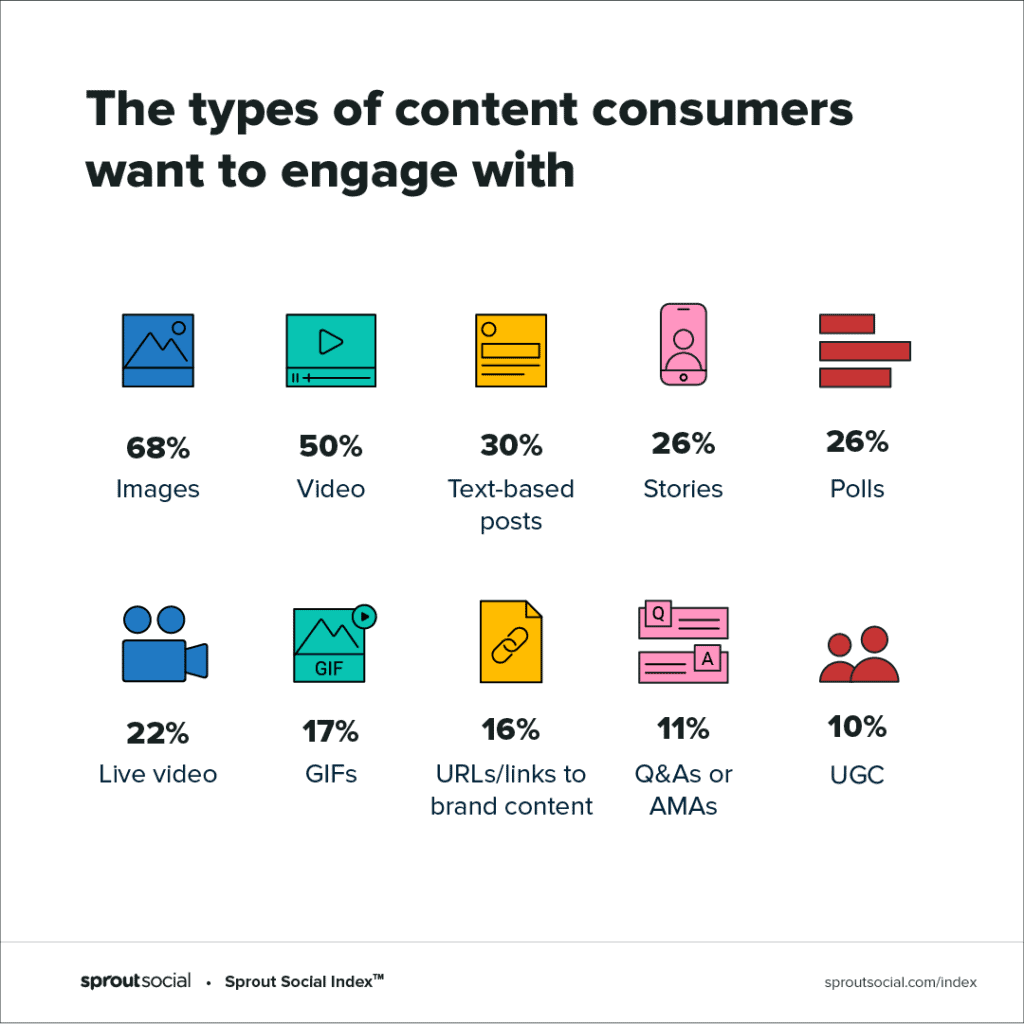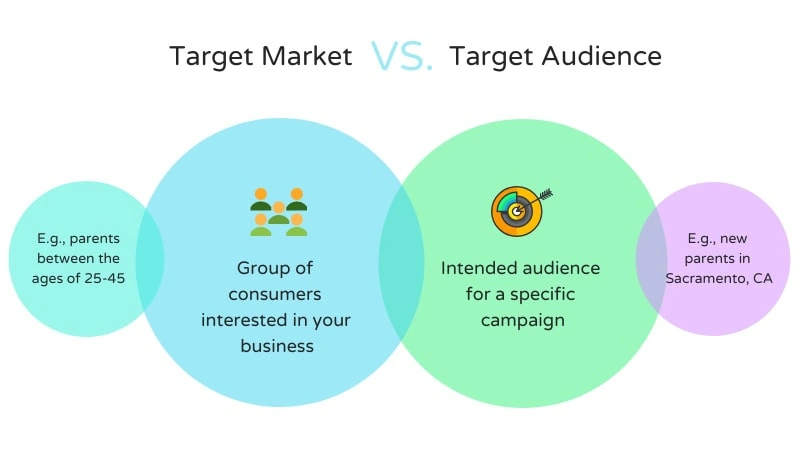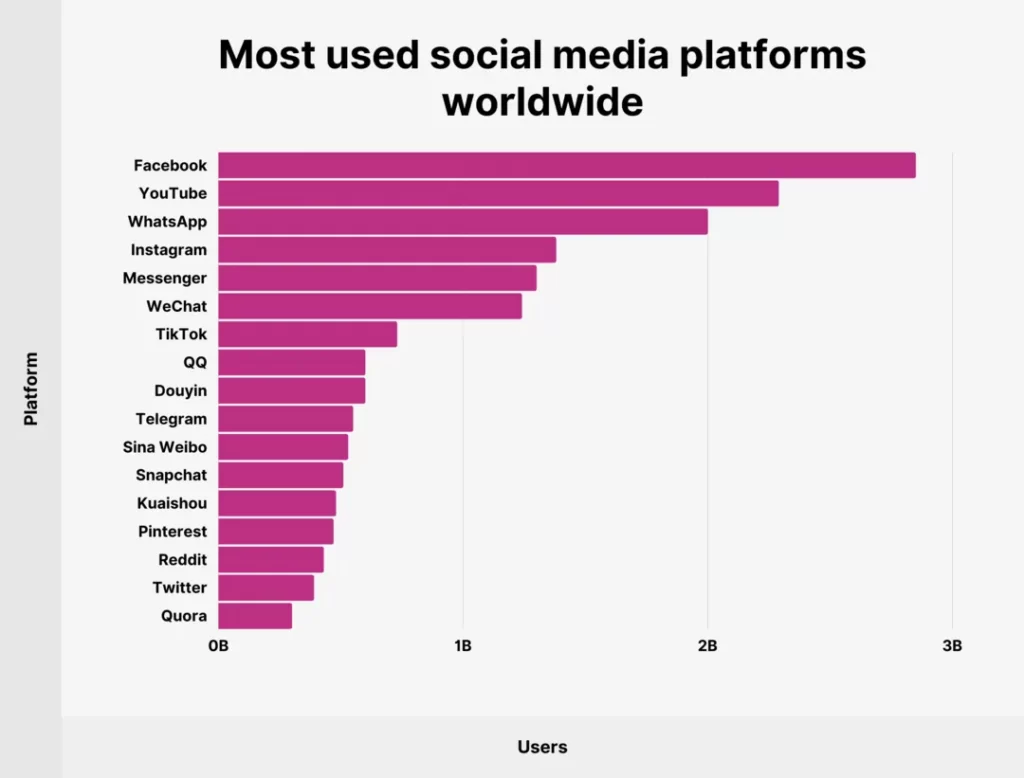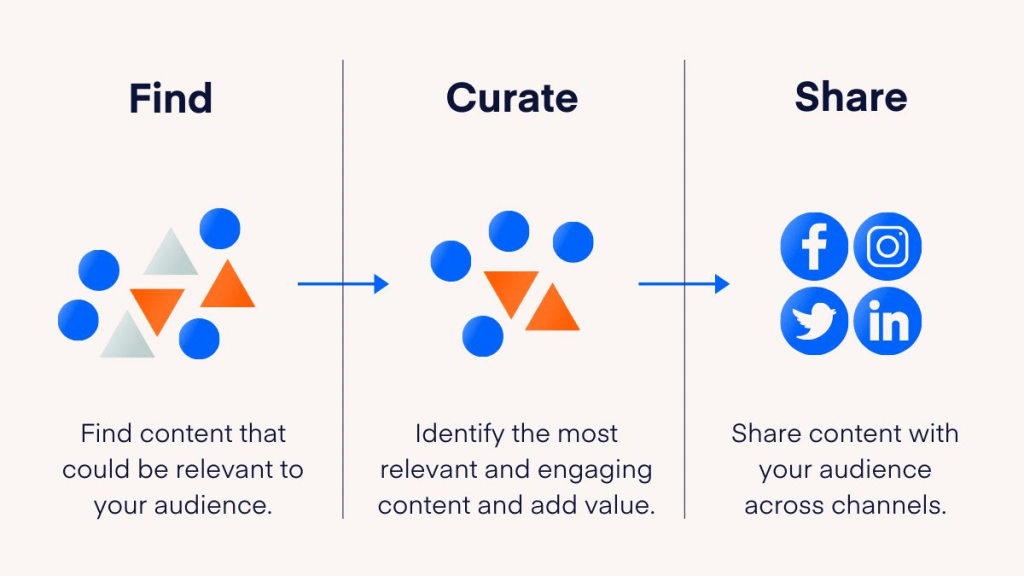Content Marketing Guide: Strategies and Tips for Success
Content marketing has become an integral part of every marketing strategy nowadays. As consumers increasingly rely on the digital world for information, entertainment, and shopping, companies must find ways to engage effectively. This guide will walk you through the essentials of content marketing, providing you with valuable insights, strategies, and tips for success.
Table of Contents
Understanding Content Marketing

Content marketing is a methodical approach to producing and spreading valuable, applicable, and reliable content to attract and maintain a well-defined target audience. This powerful marketing technique fosters trust and builds solid relationships with your audience, essential for any brand seeking to make a lasting impact in its niche. Content marketing paves the way for heightened brand awareness, improved customer engagement, and increased conversions by cultivating trust and demonstrating an understanding of your audience's needs and interests.
In the age of information overload, content marketing sets itself apart by prioritising value and relevance over mere promotional material. This customer-centric approach emphasises the importance of understanding your target audience's preferences, pain points, and aspirations, allowing you to create more profound content that resonates with them. As a result, your brand becomes a trusted source of information and a go-to destination for your audience's needs, ultimately leading to stronger customer loyalty and long-term business success.
Content marketing strengthens your connection with your audience and empowers them to advocate for your brand. By consistently providing high-quality, valuable content, you encourage your audience to share and engage with your brand across various platforms. This organic sharing and engagement help to further amplify your brand's reach, driving more traffic, leads, and conversions.
- Amazon Kindle Edition
- Pulizzi, Joe (Author)
- English (Publication Language)
- 520 Pages – 03/07/2023 (Publication Date) – McGraw Hill (Publisher)
Benefits of Content Marketing
If you are not already implementing content marketing in your business strategy, here are some benefits to consider:
- Increased brand awareness and visibility: Content marketing can help improve your brand's visibility and build awareness by creating valuable and informative content that engages your target audience. According to recent CMI research, content marketing generates three times as many leads as traditional outbound marketing methods.
- Cost-effective: Compared to traditional marketing methods, content marketing can be a more cost-effective way to reach and engage with your target audience. DemandMetric says content marketing costs 62% less than traditional marketing methods, generating three times as many leads.
- Builds trust and credibility: Creating valuable and informative content can help build trust and credibility with your target audience. When your audience perceives you as an expert in your industry, they are more likely to trust and engage with your brand. According to Nielsen, 85% of consumers trust industry experts' content.
- Increased website traffic: Creating quality content can help drive traffic to your website. According to HubSpot, businesses that publish 16 or more blog posts per month get 3.5 times more traffic than those that publish four or fewer blog posts per month.
- Improved search engine rankings: Quality content can also improve your search engine rankings, making it easier for your target audience to find you; according to a study by Content Marketing Institute, companies that blog have 434% more indexed pages than those that do not, which can lead to better search engine rankings.
- Builds long-term relationships: Content marketing can help you build long-term relationships with your audience by consistently providing valuable content that meets their needs. According to DemandGen, 47% of buyers viewed three to five pieces of content before engaging with a sales representative.
Developing a Content Marketing Strategy

An effective content marketing strategy can help increase brand awareness, build credibility, and generate leads. To develop a content marketing plan for your business, follow these steps:
- Set Clear Goals and Objectives: Determine what you want to achieve with your content marketing efforts. Do you want to increase brand awareness, generate leads, drive traffic to your website, or improve customer retention? Setting clear goals and objectives will help you create content tailored to your business's needs.
- Identify Your Target Audience: Understanding your target audience is crucial for creating content that resonates with them. Define your target audience by considering their demographics, interests, pain points, and behaviour. This will help you create content that speaks directly to them and addresses their needs.
- Determine the Type of Content You Will Produce: Content comes in many forms, including blog posts, videos, podcasts, infographics, and social media posts. Consider the content that will resonate with your target audience and align with your business goals. Plan to produce a mix of content types to keep your audience engaged.
- Create a Content Calendar: A content calendar helps you stay organised and consistent with your content creation. Plan out your content in advance and establish a schedule for publishing it. This will help you avoid the stress of last-minute content creation and ensure you regularly post content.
- Allocate Resources and Establish a Budget: Content marketing requires resources, including time, personnel, and money. Determine how much time and personnel you can allocate to content creation and establish a budget for paid content promotion, such as social media advertising.
- Promote and Distribute Your Content: Publishing content is not enough. You need to promote and distribute it to reach your target audience. Consider using social media, email marketing, and other promotional tactics to increase the visibility of your content.
- Measure and Analyse Your Results: Track the performance of your content marketing efforts to determine what is working and what is not. Use analytics tools to measure engagement, traffic, and conversion rates. Use this data to refine your content marketing strategy and improve its effectiveness.
- Audible Audiobook
- Joe Pulizzi (Author) – Joe Pulizzi (Narrator)
- English (Publication Language)
- 12/20/2013 (Publication Date) – Elephant Audiobooks (Publisher)
Setting Clear Goals and Objectives
Clear goals and objectives are the foundation of any successful content marketing strategy. By establishing what you want to achieve with your content, you can create a plan tailored to your business needs. Here are some common goals to consider:
- Increasing Website Traffic: One of the primary goals of content marketing is to drive traffic to your website. Creating valuable and informative content that resonates with your target audience can attract more visitors to your website. Once they are on your site, you can guide them through the buyer's journey, ultimately converting them into customers.
- Generating Leads: Another common goal of content marketing is to generate leads. By creating content that addresses your target audience's pain points and offers solutions to their problems, you can capture their contact information and nurture them through the sales funnel.
- Boosting Sales: Ultimately, content marketing aims to boost sales. By creating content showcasing your products or services, you can educate your audience about their benefits and convince them to purchase. This content should focus on providing value to your audience while highlighting how your products or services can meet their needs.
- Building Brand Awareness: Content marketing is an effective way to build brand awareness. You can establish your brand as a trusted authority by creating content showcasing your expertise and thought leadership in your industry. This type of content should be focused on educating and informing your audience rather than promoting your products or services directly.
- Engaging Your Target Audience: Engaging your target audience is crucial for building long-term customer relationships. Creating relevant and engaging content for your audience can keep them engaged and interested in your brand. This type of content can include blog posts, social media updates, videos, and other content showcasing your brand's personality and values.
Identifying Your Target Audience

Grasping the intricacies of your target audience is vital for generating content that resonates with them. By thoroughly understanding your audience, you can create more engaging and relevant content that captures their attention and addresses their needs. To effectively identify your target audience, consider the following steps:
- Develop comprehensive buyer personas: Buyer personas are semi-fictional representations of your ideal customers based on accurate data and market insights. You can better understand your audience's demographics, interests, and pain points by crafting detailed buyer personas. This information will enable you to tailor your content to their specific needs and preferences, making it more impactful and effective.
- Conduct thorough market research: Market research is gathering and analysing data on your target audience to better understand their needs, preferences, and behaviours. By conducting market research, you can uncover valuable insights that will help you shape your content strategy. This may involve analysing industry reports, completing surveys, or engaging in focus group discussions. By leveraging these insights, you can create content that addresses the desires and concerns of your target audience.
- Analyse your existing customer base: Your current customers can provide a wealth of information about your target audience. Analysing their demographics, purchase behaviours, and feedback can offer valuable insights into the preferences and expectations of your broader audience. By understanding the characteristics and tendencies of your existing customers, you can refine your content strategy to meet your target audience's needs better.
- Monitor social media conversations: Social media platforms are a treasure trove of information about your target audience. By keeping an eye on the conversations taking place on these platforms, you can gain a better understanding of your audience's opinions, interests, and challenges. Look for trends, popular topics, and recurring pain points among your audience to inform the development of content that speaks to their needs and desires.
By implementing these strategies, you can better understand your target audience and create content that truly resonates with them. This will help you stand out, build trust with your audience, and drive engagement and conversions.
- Frisch, Randy (Author)
- English (Publication Language)
- 256 Pages – 02/28/2019 (Publication Date) – Lioncrest Publishing (Publisher)
Determining the Type of Content
A wide array of content formats are available for you to create and share with your audience. Understanding the preferences of your target audience and aligning your content with your marketing objectives will ensure you generate the most engaging and compelling content. Some of the popular content types include:
- Blog posts: Blog posts are an excellent way to provide valuable information, share insights, and establish your brand as a thought leader in your industry. They can vary in length and format, from short-form articles to long-form, in-depth pieces. Blog posts are particularly effective for search engine optimisation (SEO) and driving organic traffic to your website.
- Videos: Videos can be highly engaging and interactive to convey complex information, demonstrate products, or tell stories. They can be produced in various styles, such as tutorials, interviews, or animated explainers, depending on your audience's preferences and the message you want to convey. Videos are particularly effective on social media platforms, where they can be easily shared and have the potential to go viral.
- Infographics: Infographics are visual representations of data or information, making complex concepts easier to understand and digest. They are an excellent way to present research findings, statistics, or step-by-step guides in an eye-catching and shareable format. Infographics can be particularly effective for attracting attention and generating engagement on social media platforms.
- Podcasts: Podcasts are audio-based content covering various topics, from interviews with industry experts to current trends and news discussions. They offer a convenient and easily accessible format for busy individuals who prefer to consume content on the go. Podcasts can help you build a loyal and engaged audience and establish your brand as an authority in your field.
- E-books: E-books are longer-form content that can provide comprehensive information on a specific topic, offering a more in-depth exploration than a blog post or infographic. E-books can serve as valuable lead magnets, encouraging potential customers to provide their contact information in exchange for your valuable content.
- Social media posts: Social media posts are an essential aspect of content marketing, as they allow you to engage with your audience directly and build a robust online presence. They can include text, images, videos, or a combination of these elements to create captivating content that generates likes, shares, and comments. Social media posts can also share other content formats, such as blog posts or videos, to drive traffic to your website.
When selecting the types of content to create, consider your audience's preferences, the platforms they use most, and your marketing objectives. Experiment with different formats and analyse the engagement and conversion metrics to determine which types of content are most effective for your specific audience and goals.
Creating a Content Calendar

A content calendar is indispensable for organising and streamlining your content marketing efforts. It lets you plan and schedule your content creation and distribution, ensuring consistency and cohesion in your marketing strategy. A well-structured content calendar should encompass the following components:
- Content topics: Brainstorm and list the issues you plan to cover. These topics should be relevant to your target audience, address their needs, and align with your brand's messaging. You can cover various subjects by outlining the content topics in advance and maintaining a consistent flow of valuable and engaging content.
- Publication dates: Schedule publication dates for each piece of content, taking into account the time required for research, creation, and editing. This will help you establish a consistent content release schedule for building and maintaining your audience's interest. Additionally, planning publication dates allows you to align your content with seasonal events, industry trends, or product launches, increasing its relevance and impact.
- Distribution channels: Identify the platforms and channels through which you will distribute your content. These may include your website, blog, social media platforms, email newsletters, or guest posting on other websites. By specifying the distribution channels for each piece of content, you can tailor your content to suit each platform's unique requirements and audiences, maximising its reach and engagement potential.
- Content format: Determine the form for each piece of content, such as blog posts, videos, infographics, podcasts, or social media posts. This will help you plan and allocate resources effectively, as different content formats may require varying time, effort, and expertise. Additionally, understanding the content format allows you to ensure that you provide a diverse mix of content types, catering to your target audience's preferences and consumption habits.
By incorporating these elements into your content calendar, you can effectively organise and plan your content marketing efforts, leading to increased efficiency and better results. Regularly reviewing and updating your content calendar will enable you to adapt to changes in audience preferences or industry trends, ensuring that your content remains relevant and engaging over time.
- Audible Audiobook
- Marcus Sheridan (Author) – Marcus Sheridan (Narrator)
- English (Publication Language)
- 12/24/2019 (Publication Date) – Gildan Media, LLC (Publisher)
Allocating Resources and Establishing a Budget
To effectively execute your content marketing strategy, allocating the necessary resources and establishing a budget covering all content creation, distribution, and promotion aspects is crucial. Consider the following steps to ensure a successful content marketing campaign:
- Identify required team members: Your content marketing team may include various professionals, such as writers, editors, graphic designers, and video production specialists. Depending on your content formats and marketing goals, you may need to hire or collaborate with these experts to produce high-quality, engaging content that resonates with your target audience.
- Assess content management needs: In addition to your content creation team, you may also require content management software or tools to streamline the process of organising, scheduling, and publishing your content. Evaluate your needs and choose a content management system (CMS) or tools that best suit your requirements and workflow.
- Calculate promotional expenses: To maximise the reach and impact of your content, you may need to invest in paid advertising or content promotion. This could include sponsored social media posts, search engine marketing, or display advertising. Determine your content's most effective promotional strategies and allocate a portion of your budget to these initiatives.
- Establish a comprehensive budget: With a clear understanding of the resources required for content creation, management, and promotion, develop a complete budget that covers all aspects of your content marketing efforts. This budget should account for team member salaries or freelance fees, software subscriptions, promotional expenses, and any additional costs associated with producing and distributing your content. Make sure to periodically review and adjust your budget to accommodate changes in your marketing strategy or business goals.
By allocating resources effectively and establishing a well-structured budget, you can ensure that your content marketing strategy is executed efficiently and achieves the desired results. Regularly monitoring and evaluating the performance of your content and the return on investment (ROI) will enable you to make informed decisions regarding resource allocation and budget adjustments to optimise the success of your content marketing efforts.
Promoting and Distributing Your Content

To maximise the reach and engagement of your content, it's essential to leverage various distribution channels catering to your target audience's different segments. Diversifying your promotional efforts will help you extend your content's visibility and generate a more significant impact. Consider employing the following strategies to amplify your content:
- Social media platforms: Utilise popular social media platforms such as Facebook, Twitter, LinkedIn, Instagram, and Pinterest to share your content with your followers and beyond. Craft platform-specific content and adapt your messaging to suit each platform's unique characteristics and audience preferences. Regularly engaging with your audience through likes, comments, and shares will also help to foster a sense of community and increase your content's reach.
- Email marketing: Leverage email marketing campaigns to share your content with subscribers who have expressed interest in your brand. Curate and distribute regular newsletters featuring your latest blog posts, videos, infographics, upcoming events, promotions, or product launches. Personalise your email content to cater to different segments of your audience, enhancing its relevance and engagement potential.
- Influencer partnerships: Collaborate with influencers or industry experts with an established audience that aligns with your target market. By partnering with these individuals, you can tap into their credibility and reach, further amplifying your content's visibility. Explore options such as sponsored posts, co-created content, or expert interviews to engage their audience and showcase your brand's value.
- Paid advertising: Invest in paid advertising campaigns to boost your content's visibility and reach a wider audience. Experiment with various advertising channels, such as social media ads, search engine marketing, or display advertising, to determine the most effective approach for your content and audience. Monitor and analyse your advertising performance to optimise your campaigns and maximise your return on investment (ROI).
- Guest blogging: Seek out guest blogging opportunities on reputable websites or blogs within your industry. By contributing valuable and relevant content to these platforms, you can introduce your brand to a new audience and establish your authority within your niche. Ensure your guest posts include links to your website or relevant content, driving traffic and encouraging further engagement with your brand.
By incorporating these promotion and distribution strategies into your content marketing efforts, you can significantly expand your content's reach, engage a broader audience, and enhance the overall impact of your marketing initiatives. Continuously monitor and analyse your promotional efforts' performance to identify improvement areas and optimise your strategies for maximum results.
- Amazon Kindle Edition
- Deziel, Melanie (Author)
- English (Publication Language)
- 206 Pages – 02/23/2020 (Publication Date) – StoryFuel Press (Publisher)
Measuring and Analysing Your Results
Evaluating the success of your content marketing efforts is essential for making data-driven decisions and optimising your strategy for better results. By monitoring key performance indicators (KPIs), you can gain valuable insights into your content's effectiveness and identify improvement areas. Consider tracking the following KPIs to assess your content marketing performance:
- Website traffic: Analyse the volume of visitors arriving at your website through your content marketing initiatives. Examine metrics such as page views, unique visitors, and average time on the page to gauge user interest and engagement. Additionally, track your website traffic sources, such as organic search, social media, or referrals, to identify your content's most effective distribution channels.
- Social media engagement: Assess the performance of your content on social media platforms by monitoring metrics such as likes, shares, comments, and follows. High levels of engagement indicate that your content resonates with your audience, while lower engagement levels may signal the need for adjustments in your content strategy or distribution approach.
- Email open and click-through rates: Monitor the success of your email marketing campaigns by tracking open rates and click-through rates. These metrics can help you determine the effectiveness of your email subject lines, content, and calls to action. Low open and click-through rates indicate that your content needs to be more compelling or that your audience segments must be well-targeted.
- Conversion rates: Measure the percentage of visitors who complete a desired action after engaging with your content, such as purchasing, signing up for a newsletter, or downloading an e-book. High conversion rates indicate that your content effectively drives users toward your desired outcome, while lower rates suggest improvements in your content or call to action.
- Leads generated: Evaluate the number of leads generated through your content marketing efforts. This can include new email subscribers, contact form submissions, or inquiries from potential customers. Tracking developed leads can help you determine your content marketing initiatives' return on investment (ROI) and inform future budgeting and resource allocation decisions.
By monitoring these KPIs and analysing the data, you can make informed decisions about your content marketing strategy and implement changes to optimise its effectiveness. Regularly review and adjust your content marketing approach based on the insights gained from these metrics to ensure your efforts evolve and improve, driving better results over time.
Tips for Creating High-Quality Content

Producing high-quality content is essential for content marketing success. Keep these tips in mind when creating content:
- Define your target audience: Understand your ideal customer's demographics, interests, and pain points to create content that resonates with them.
- Establish clear goals: Set specific, measurable, attainable, relevant, and time-bound (SMART) objectives for your content marketing efforts.
- Conduct keyword research: Identify relevant keywords and phrases your target audience is searching for and incorporate them into your content for improved search engine visibility.
- Focus on readability: Ensure your content is easy to read and understand using precise language, short paragraphs, and descriptive headings and subheadings.
- Create engaging headlines: Craft attention-grabbing headlines that entice readers to click and consume your content.
- Use visuals: Enhance your content with images, videos, or infographics to make it more appealing and digestible.
- Be informative and educational: Provide valuable information that educates your audience and addresses their needs or pain points.
- Tell a story: Engage your audience emotionally by weaving a narrative into your content that showcases your brand's values and mission.
- Be authentic and transparent: Maintain a genuine tone and provide accurate information to build trust with your audience.
- Use data and statistics: To establish credibility and authority, support your claims with data, research findings, or case studies.
- Optimise for SEO: Implement search engine optimisation (SEO) best practices, such as using header tags, meta descriptions, and internal linking, to improve your content's visibility on search engines.
- Encourage user-generated content: Invite your audience to contribute content, such as reviews, testimonials, or social media posts, to foster community and engagement.
- Utilise a call-to-action (CTA): Include a clear and compelling CTA that guides your audience toward the desired action, such as subscribing to a newsletter or purchasing.
- Proofread and edit: Review your content for grammatical errors, inconsistencies, or inaccuracies to maintain a professional and polished image.
- Keep content up-to-date: Regularly update and refresh your content to ensure it remains relevant and accurate over time.
- Repurpose content: Transform existing content into different formats, such as turning a blog post into a video or infographic, to maximise its reach and engagement potential.
- Monitor and analyse performance: Track key performance indicators (KPIs) to assess the effectiveness of your content and make data-driven decisions for improvement.
- Engage with your audience: Respond to comments, questions, and feedback to foster a sense of community and encourage further engagement.
- Promote and distribute content: Utilise various channels, such as social media, email marketing, or guest blogging, to share and amplify your content's reach.
- Experiment and iterate: Continuously test new content formats, topics, and strategies to discover what works best for your audience and objectives and refine your content marketing approach accordingly.
- Covey, Wendy (Author)
- English (Publication Language)
- 248 Pages – 05/13/2020 (Publication Date) – River Grove Books (Publisher)
Staying Ahead of Content Marketing Trends
Content marketing is an ever-changing landscape, and keeping abreast of the latest trends can give you a competitive advantage. To ensure that your content marketing strategy remains fresh, innovative, and practical, consider adopting the following practices:
- Follow industry leaders and influencers: Keep an eye on thought leaders, influencers, and prominent figures in the content marketing space. By following their social media profiles, blog posts, or podcasts, you can gain valuable insights into new trends, best practices, and emerging strategies.
- Attend conferences and webinars: Participate in industry conferences, webinars, and workshops to learn from experts, network with peers, and stay up-to-date on the latest content marketing innovations. These events can also provide valuable opportunities to gain hands-on experience with new tools, techniques, and approaches.
- Subscribe to industry newsletters and blogs: Sign up for content marketing newsletters and follow reputable blogs to receive regular updates on the latest trends, case studies, and research findings. Reading industry-specific content can help you stay informed and inspired, allowing you to make well-informed decisions regarding your content marketing strategy.
- Engage with your audience to understand their changing preferences: Regularly interact with them through comments, social media, surveys, or focus groups to gather insights into their evolving needs, preferences, and interests. By staying in tune with your audience, you can create relevant and engaging content, ensuring continued success in your content marketing efforts.
- Regularly review and adjust your strategy: Periodically assess the performance of your content marketing initiatives by tracking key performance indicators (KPIs) and analysing the data. Use these insights to identify areas for improvement, make data-driven decisions, and adjust your strategy based on new trends, industry developments, and audience preferences.
By proactively staying ahead of content marketing trends and continuously refining your approach, you can ensure that your marketing efforts remain practical, relevant, and engaging. This ongoing commitment to innovation and improvement will help you maintain a competitive edge and drive long-term success in your content marketing endeavours.
Scaling Your Content Marketing Efforts

As your business experiences growth, scaling your content marketing efforts to sustain momentum and deliver impactful results is essential. Implementing the following strategies can help you effectively expand your content marketing initiatives while maintaining efficiency and effectiveness:
- Leverage content marketing tools and technology: Invest in advanced content marketing tools and technologies to streamline processes, automate tasks, and enhance your overall marketing efficiency. Consider tools for content management, analytics, social media scheduling, and email marketing to save time and resources while maximising the impact of your efforts.
- Create a content repurposing strategy: Develop a plan to repurpose existing content into different formats and platforms, maximising its reach and engagement potential. For example, transform a popular blog post into an infographic, video, or podcast episode to connect with new audience segments and add value to your existing content.
- Collaborate with influencers and industry partners: Forge partnerships with influencers, industry experts, or complementary businesses to expand your content's reach and credibility. Collaborations can take various forms, such as guest posts, co-created content, or expert interviews. By leveraging the networks and expertise of your partners, you can amplify your content's impact and reach a broader audience.
- Outsource specific tasks to freelancers or agencies: As your content marketing demands increase, consider outsourcing specific tasks to freelancers or specialised agencies to maintain high quality and efficiency. Tasks such as writing, editing, graphic design, or video production can be delegated to external professionals, allowing your in-house team to focus on strategy, planning, and overall management.
- Encourage user-generated content: Cultivate a community of engaged users who contribute their scope, such as reviews, testimonials, or social media posts. User-generated content helps expand your content library and fosters a sense of authenticity and trust among your audience. Promote user-generated content campaigns and showcase your audience's contributions to encourage further engagement and participation.
By adopting these strategies, you can scale your content marketing efforts as your business grows, ensuring you continue delivering valuable, engaging content that resonates with your target audience. Regularly assess and refine your approach to maintain a strong competitive edge and drive sustained success in content marketing.
Investing in Content Marketing Tools and Technology
Investing in the right tools and technologies is crucial to maximising the impact of your content marketing strategy. These tools can help you streamline your content marketing processes, boost productivity, and elevate the performance of your content across various platforms.
Below, we'll explore a range of content marketing tools that can help you optimise your content marketing efforts:
- Content Management Systems (CMS): A robust content management system (CMS) is the foundation for your content marketing strategy. CMS platforms allow you to easily create, manage, and publish content across various channels. They also enable you to collaborate with team members, track content performance, and manage your content's lifecycle. Examples of popular CMS platforms include WordPress, HubSpot, and Drupal.
- Social Media Scheduling and Management Tools: Effectively managing your social media presence can be time-consuming. Social media scheduling and management tools help you automate posting and ensure your content is consistently published across different platforms. These tools also provide insights into audience engagement, allowing you to optimise your content strategy. Examples of social media scheduling tools include Buffer, Hootsuite, and Sprout Social.
- Email Marketing Platforms: Email marketing remains one of the most effective channels for nurturing leads and driving conversions. Email marketing platforms help you design, send, and track email campaigns, making engaging with your audience and achieving your marketing goals easier. Popular email marketing platforms include Mailchimp, Constant Contact, and SendinBlue. If you find that a tool like SendinBlue meets your needs but requires additional features, it might be worth exploring SendinBlue alternatives for more comprehensive solutions.
- SEO Tools: Search engine optimisation (SEO) is crucial for ensuring that your content is easily discoverable by your target audience. SEO tools provide valuable insights into keyword research, on-page optimisation, and link-building strategies, helping you optimise your content for search engines. Some widely used SEO tools include Ahrefs, SEMrush, and Moz.
- Analytics and Reporting Tools: Understanding the performance of your content marketing efforts is vital for making data-driven decisions and refining your strategy. Analytics and reporting tools help you track important metrics such as traffic, engagement, and conversions, allowing you to identify areas for improvement and measure the ROI of your content marketing initiatives. Google Analytics, Adobe Analytics, and Mixpanel are powerful analytics and reporting tools.
Investing in content marketing tools and technologies is essential for businesses looking to enhance their online presence, engage with their target audience, and drive growth. By leveraging these tools, you can streamline your content marketing processes, improve productivity, and ensure that your content consistently delivers results.
Developing a Content Repurposing Strategy

Developing a content repurposing strategy is an essential aspect of modern content marketing. By repurposing content, you can maximise the value of your existing assets by presenting them in different formats or distributing them across various platforms. This helps you reach a broader audience and saves time and resources by leveraging your existing content library. Let's explore multiple ways to repurpose content and the benefits of incorporating a content repurposing strategy into your marketing plan.
Benefits of Content Repurposing
- Extends the life of your content: Repurposing content allows you to breathe new life into older pieces, ensuring that your hard work remains relevant and valuable over time.
- Expands your audience reach: By presenting content in different formats, you can cater to diverse audience preferences and consumption habits, ultimately boosting your reach.
- Enhances SEO performance: Diversifying your content formats and platforms can improve your website's SEO performance by increasing backlinks, social shares, and overall engagement.
- Boosts content creation efficiency: Repurposing content saves time and resources, enabling you to focus on other essential aspects of your marketing strategy.
Examples of Content Repurposing
- Transforming a blog post into an infographic: Visualise key data points or concepts from a blog post to create an engaging infographic easily shared on social media or embedded in other articles.
- Creating a video from a podcast episode: Convert an informative podcast episode into a visually appealing video, complete with images, graphics, or animations, to reach a broader audience on platforms like YouTube or Facebook.
- Turning an e-book into a series of blog posts: Break down an e-book into smaller, digestible sections that can be published as individual blog posts, making it easier for your audience to consume and share the content.
- Converting a webinar into a slide presentation: Extract critical points and visuals from a webinar to create a SlideShare presentation that can be shared on LinkedIn or embedded on your website.
- Adapting case studies into social media posts: Highlight the most compelling aspects of your case studies and create eye-catching social media posts to share your success stories with a broader audience.
Collaborating with Influencers and Industry Partners
Collaborating with influencers and industry partners is an effective way to expand the reach and credibility of your content. It can help you establish a strong presence in your niche, increase your online visibility, and drive traffic to your website. Here are some potential collaboration opportunities that you can consider:
- Guest Blogging or Podcasting: Guest blogging or podcasting is a great way to share your expertise with a new audience and reach potential customers. By guest blogging or podcasting on a reputable website or platform, you can gain exposure to a broader audience while positioning yourself as an authority in your field.
- Co-hosting Webinars: Webinars are an excellent way to engage with your audience and provide valuable information that can help them solve their problems. By co-hosting a webinar with an influencer or industry partner, you can leverage their expertise and credibility to attract a larger audience and establish your authority in your niche.
- Social Media Takeovers: Social media takeovers involve giving an influencer or industry partner control of your social media accounts for a day or a week. They can share their insights, opinions, and expertise with your audience during this time. This can help you reach new followers, increase engagement, and build relationships with your target audience.
- Sponsored Content: Sponsored content involves paying an influencer or industry partner to create content that promotes your brand or product. This can include blog posts, social media posts, videos, and more. Sponsored content effectively leverages the influencer's audience and reaches a new audience that may not have heard of your brand before.
Collaborating with influencers and industry partners is a powerful way to expand your content's reach and credibility. Whether you choose to guest blog, co-host webinars, take over social media, or create sponsored content, there are many opportunities to build mutually beneficial relationships to help you grow your brand and audience.
Outsourcing Certain Tasks to Freelancers or Agencies
As your content marketing strategy expands, it's important to consider outsourcing specific tasks to freelancers or agencies to maintain a consistent and high-quality output. Outsourcing these tasks can save you time and money while also allowing you to tap into the expertise of professionals in the field. Here are some of the jobs to consider outsourcing:
- Content Writing and Editing: Creating high-quality content that engages your audience and drives traffic to your website requires expertise and time. Outsourcing your content writing and editing needs to professional writers, and editors can ensure that your content is well-written, properly structured, and optimised for SEO. It can also help you maintain a consistent publishing schedule without sacrificing quality.
- Graphic Design: Visual content plays a crucial role in content marketing. Outsourcing your graphic design needs to professionals can ensure that your visual content is engaging, visually appealing, and consistent with your brand's image. This can include creating infographics, images for social media posts, and designing other types of visual content.
- Video Production: Video content is becoming increasingly important in content marketing. Outsourcing video production to professionals can help you create high-quality videos that engage your audience and showcase your brand's unique personality. This can include creating explainer videos, product demos, and other types of videos.
- Social Media Management: Managing social media accounts can be time-consuming, especially when you need to engage with your audience, post updates, and track analytics. Outsourcing social media management to professionals can help you streamline the process and manage your social media accounts effectively. This can include creating and posting updates, engaging with your audience, and monitoring your social media analytics.
- SEO Optimisation: Optimising your content for search engines requires knowledge and experience in SEO. Outsourcing SEO to professionals can help you improve your search engine rankings, increase organic traffic, and reach a wider audience. This can include conducting keyword research, optimising your content, and building high-quality backlinks.
Outsourcing specific tasks to freelancers or agencies can help you maintain a consistent and high-quality output in your content marketing strategy. Whether you choose to outsource content writing and editing, graphic design, video production, social media management, or SEO optimisation, outsourcing can help you save time and money while tapping into the expertise of professionals in the field.
Encouraging User-Generated Content

User-generated content (UGC) is an effective way to promote your brand, products, or services. Encouraging your audience to create UGC can help you scale your content marketing efforts while fostering a sense of community and engagement. Here are some ways to encourage UGC:
- Hosting Social Media Contests: Hosting social media contests is a great way to encourage your audience to create UGC. You can ask your audience to submit photos, videos, or other content creatively showcasing your brand or products. This can include giving away prizes or incentives to the best submissions. This not only encourages UGC but also helps to spread brand awareness.
- Featuring Customer Testimonials and Reviews: Customer testimonials and reviews on your website or social media platforms can help build trust and credibility with your audience. This type of UGC provides social proof that your products or services are valuable and trustworthy. It can also encourage customers to share their experiences with your brand, generating more UGC.
- Sharing User-Generated Photos or Videos: Sharing user-generated photos or videos on your social media platforms or website can help increase engagement and foster a sense of community around your brand. By sharing this content, you're showing your audience that you value their contributions and are proud to showcase their creativity. It can also inspire other customers to create their own UGC.
- Creating Branded Hashtags: Creating branded hashtags is a simple but effective way to encourage your audience to make UGC. Using your branded hashtag, your audience can easily share their content and connect with others interested in your brand. This can also help you track and measure the success of your UGC campaigns.
In summary, encouraging UGC can help you scale your content marketing efforts while fostering a sense of community and engagement. By hosting social media contests, featuring customer testimonials and reviews, sharing user-generated photos or videos, and creating branded hashtags, you can encourage your audience to create UGC that showcases your brand or products in creative and compelling ways.
Conclusion
Content marketing is a powerful tool for businesses looking to engage their audience, build brand awareness, and drive conversions. By developing a solid content marketing strategy, producing high-quality content, staying ahead of trends, and scaling your efforts effectively, you can set your business up for long-term success. With dedication, consistency, and a focus on providing value to your audience, you'll be well on your way to mastering the art of content marketing.
Last update on 2024-05-11 / Affiliate links / Images from Amazon Product Advertising API






